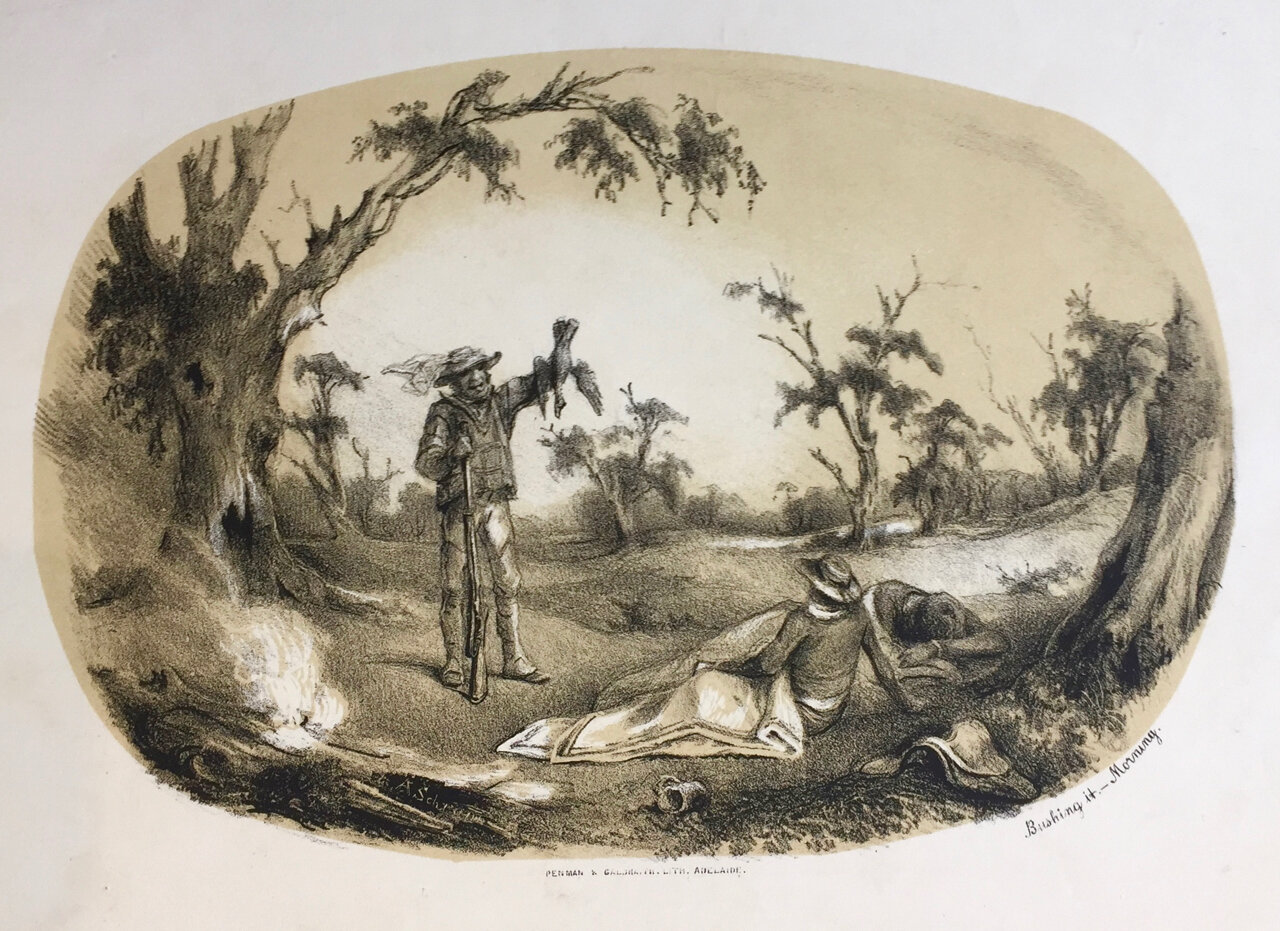Alexander Schramm | Australian Natives 1859 | SOLD
Australian Natives- South Australian Scenes 1859
20.2 cm x 14.2 cm
Lithograph on paper
An incredibly well preserved collection of four chalk lithographs, printed in sepia colour from two stones.
These lithographs were printed as a set of four, and titled ‘Australian Natives’ in Adelaide, 1859.
A valuable record of life in colonial Australia.
One particular work titled ‘Civilisation in Nature’ is quite unique in colonial Australia as it clearly reveals Schramm’s attitude towards the plight of indigenous Australians. A gold digger is working on his knees, whilst an indigenous couple standing tall look on, intrigued that a stone should be so interesting.
Other Lithographs in the set are:
Bushing it- Morning | 17 x 25.4 cm Oval image | Full sheet in excellent condition
Halt By The Way | 13.6 x 20.2 cm oval image | Full sheet in excellent condition signed in the plate A Schramm 1859
Natives On The Tramp | 16.2 x 23.8 cm | Full sheet in excellent condition
Civilization Versus Nature | 14.2 x 20.2 cm | Full Sheet in excellent condition signed in the plate A Schramm.
Printed by Penman & Galbraith lithographers Adelaide
SOLD
Alexander Schramm 1813-1864
A native of Berlin, Germany, where his father was a book seller, Schramm studied at the Berlin Academy of the Arts, once his study was complete he travelled in eastern Europe for several months settling in Poland. Schramm exhibited at the Berlin Academy exhibitions between 1834 to 1838.
In 1849 Schramm migrated to South Australia arriving on the 7th of August aboard the Princess Louise one of 12 ships that brought around 1500 German immigrants to South Australia.
His reasons for leaving Europe are unknown. It is possible the political unrest of 1848 played a role in his departure. His life in Adelaide was not well documented, he was unmarried, and did not have any direct family in South Australia. He died of Tuberculosis on the 8th of November 1864, at the age of 50 and was given a paupers burial.
A directory entry from 1851 lists a Alexander Schramm, Painter, Charles Street.
Schramm was one of a small group of colonial artists who painted in a way that treated the indigenous people with great sensitivity. His paintings and lithographs, predominately depicting indigenous life, reflect their plight and even show contempt for European Values. Focusing on the Australian landscape and the manners and customs of the Aborigines, his work is culturally significant.
He exhibited his paintings at the South Australian Society of Arts from as early as 1850. He soon developed a reputation for his talent with the brush.
Art critic Mary Overbury described the artist and his situation: “A German by birth, an artist by nature and training, small in stature, dark and somewhat retiring in disposition, he made but few intimates and lived on the proceeds of his brush, his paintings were often disposed of far beneath their real value”
Much of Schramm’s work has been lost with time, many examples have not survived, 19th century Australia did not value his works as we do today.
As major contributor to aesthetically pleasing images of indigenous colonial life, Alexander Schramm has done Australia a great favour.
Schramm’s works are held in the following institutions:
The National Gallery
The National Library
The South Australian State Library
The South Australian State Gallery
The Mitchell Library




